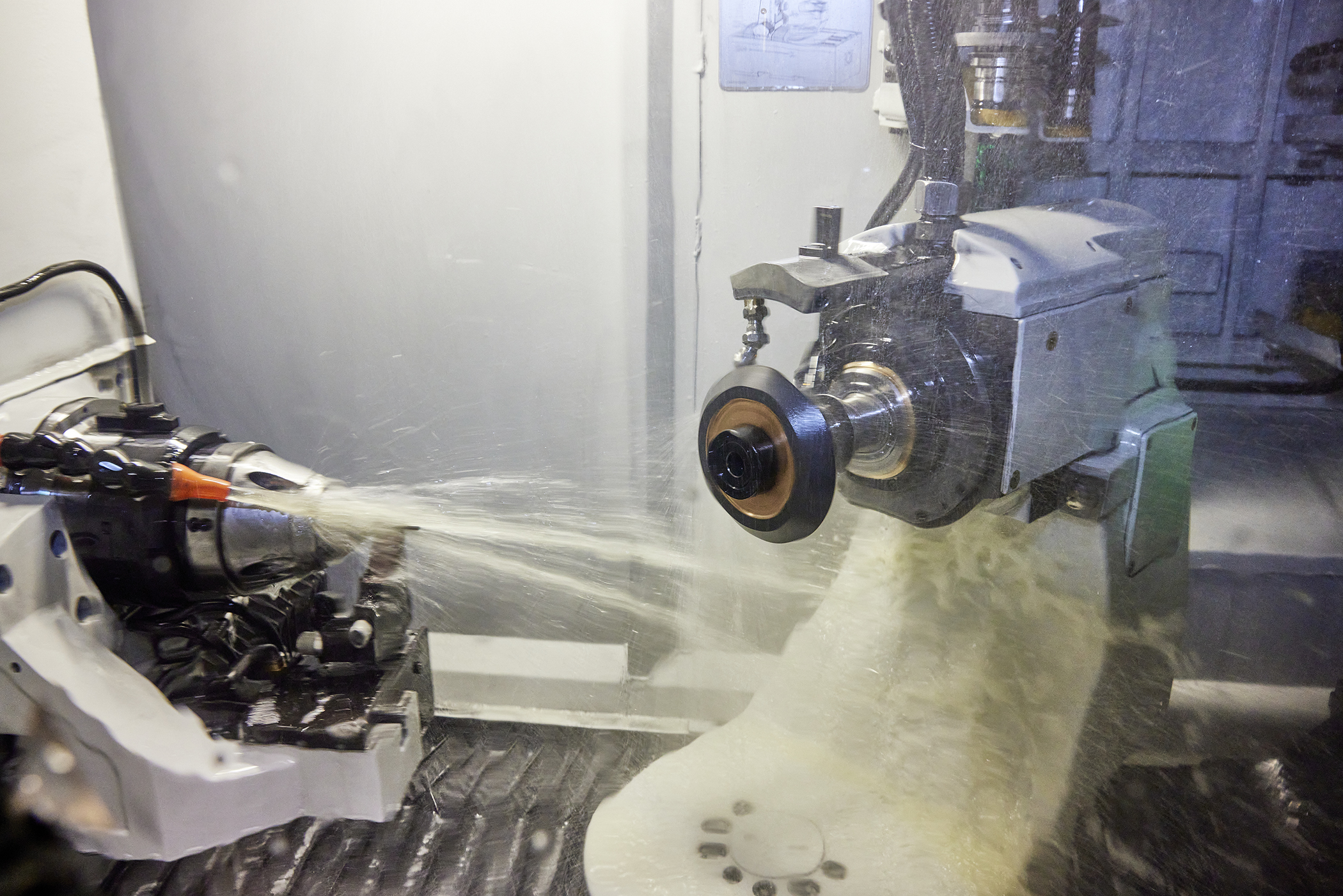 Carbide Grinding Company Inc. was established in 1974 and developed a reputation as a small, specialist maker of tools, supplying Milwaukee-area manufacturers like Snap-on and Harley-Davidson.
Carbide Grinding Company Inc. was established in 1974 and developed a reputation as a small, specialist maker of tools, supplying Milwaukee-area manufacturers like Snap-on and Harley-Davidson.
After purchasing the company in 2003 and giving it a new image as Gorilla Mill two years after -- its branding is simian-themed, aggressive, fun, and comes with the tagline “Weapons of Mass Production” -- Kevin Cranker has set the company on a solid growth path.
They are now up to 48 employees, with 300 distributors worldwide, and a diverse spread of customers.
These include automotive and defence suppliers, aerospace customers including Boeing, and space clients like SpaceX and Blue Origin.
But it’s the support of “mom and pop” shops that Cranker seems happiest about. “They're the guys who keep our work up,” he said.
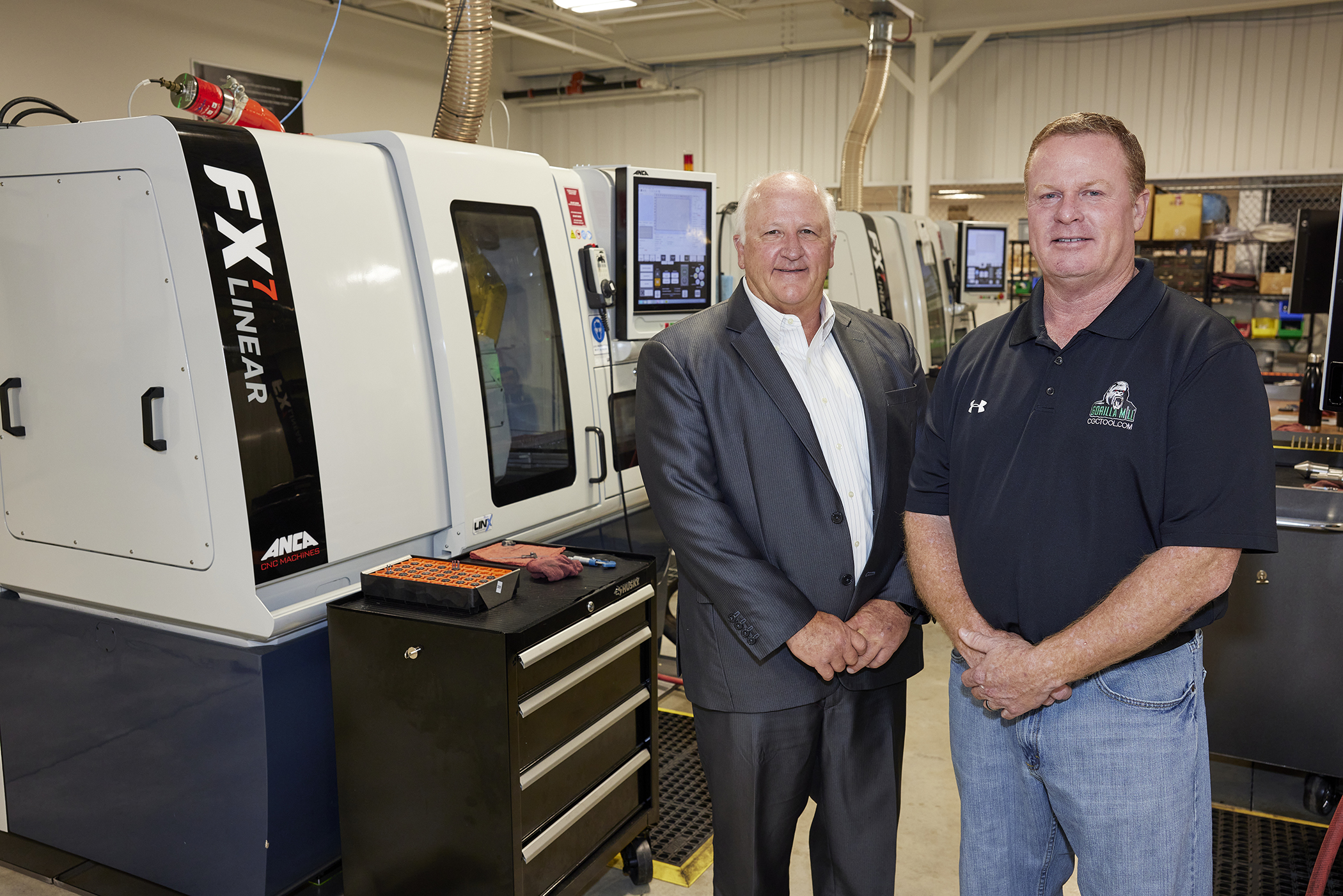 “When one of the big guys goes away it stings a bit. But then we have a number of small mom and pop job shops that we love doing business with because they’re always there and just always buying.”
“When one of the big guys goes away it stings a bit. But then we have a number of small mom and pop job shops that we love doing business with because they’re always there and just always buying.”
Cranker says ANCA CNC Machines has played a large role in Gorilla’s Mills’ progress.
After investing in and being disappointed by a European-made tool and cutter grinding machine early in the millennium, he decided to try an RGX, suitable for re-grinding and low-volume production. The machine is still part of GM’s collection of ANCA machines, and has been joined by 17 others.
“I've been buying a couple a year pretty steady here for the last five or six years. Probably going to need some more here before 2022,” he said.
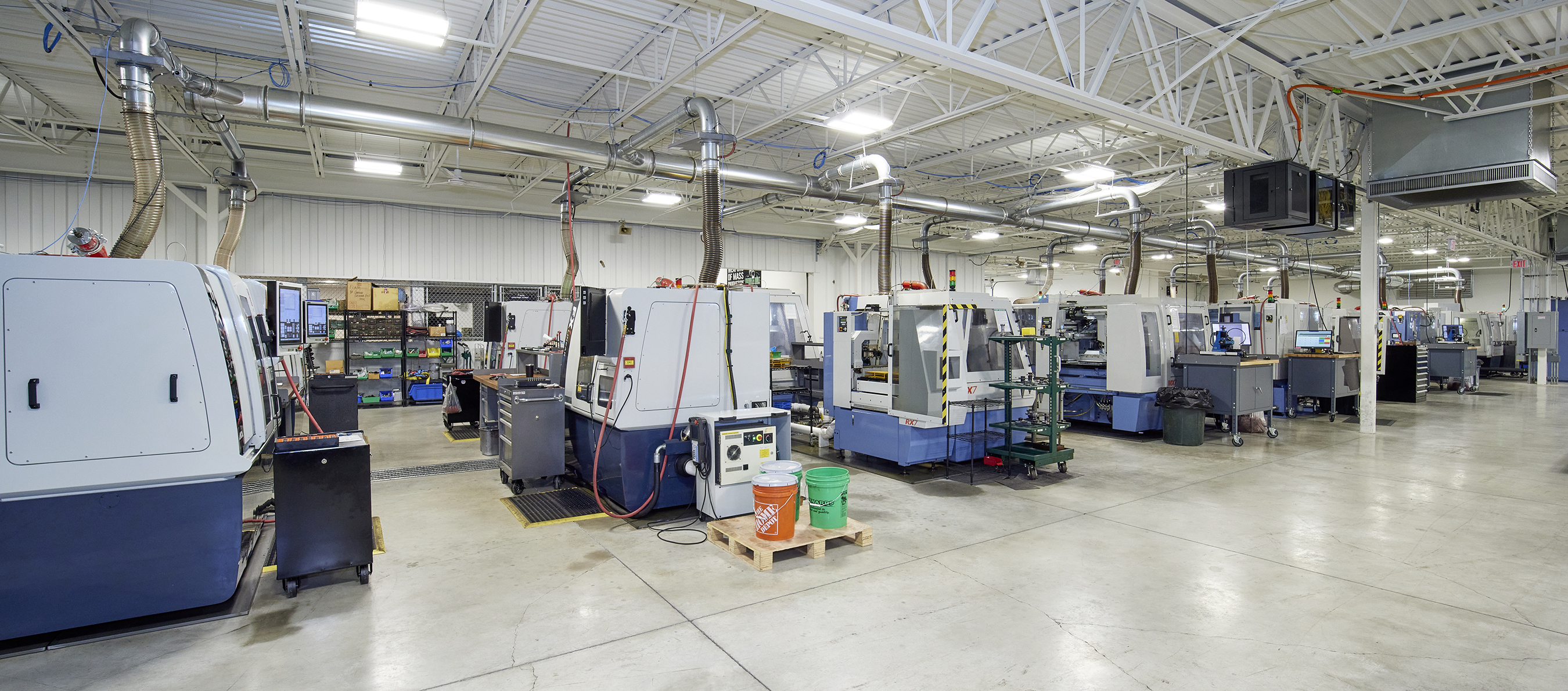 “We have several RX7s. Several MX7s. A couple of TX7s. We've got now a bunch of FX7s. It's a mix of all different older ones and newer ones. I really, really like the new ones with the linear motors, which work really well.”
“We have several RX7s. Several MX7s. A couple of TX7s. We've got now a bunch of FX7s. It's a mix of all different older ones and newer ones. I really, really like the new ones with the linear motors, which work really well.”
Cranker said the linear motors made by ANCA Motion offer a “night and day” difference versus ballscrew motion, with greater precision and speeds, and much greater durability in a workshop where a lot of carbide sludge is generated.
ANCA’s pioneering simulation software was another enabler, and took the “heartache and headache” out of designing the geometries of Gorilla’s patented four-and five-flute mills, which Cranker designed with Mark Greenwood, national sales manager at Gorilla.
The firm adopted simulation with the purchase of its second ANCA machine, and it has proved invaluable ever since.
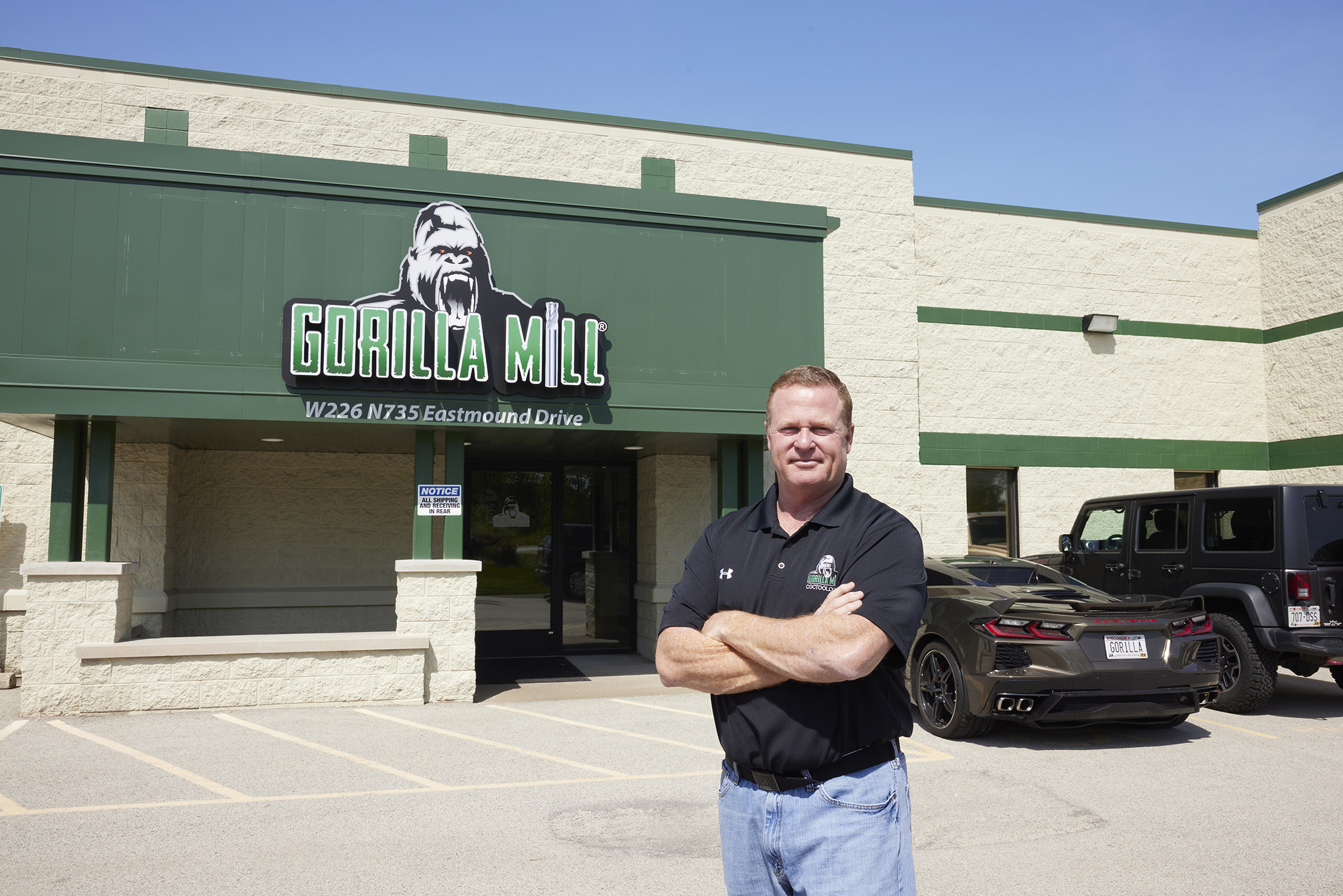 “The GM Team quickly identified the value in ANCA 3D CIMulation in its assistance to design and develop new tool geometries without actually grinding a physical tool,” said ANCA Inc. general manager, Russell Riddiford.
“The GM Team quickly identified the value in ANCA 3D CIMulation in its assistance to design and develop new tool geometries without actually grinding a physical tool,” said ANCA Inc. general manager, Russell Riddiford.
“Then they take that design to the ANCA machine and get the first tool off the machine perfectly as designed in the 3D CIMulation.”
In regards to tool development, Cranker said that there would be “just no way we could do it” without the 3D CIMulation.
“We were able to mess around with geometries in a virtual space and not waste materials and machine time and everything else,” he said.
“Nowadays, the simulator has just gotten so much better with all these new additions and the fact that now you can make blueprint drawings from it and you can just do a whole lot more.”
One software feature that gets regular use is tool balancing, introduced in ToolRoom RN34. This has proven “a huge help,” mainly for single-flute routers, enabling design of tools for high-speed machining that won’t produce noise and chatter and damage workpieces.
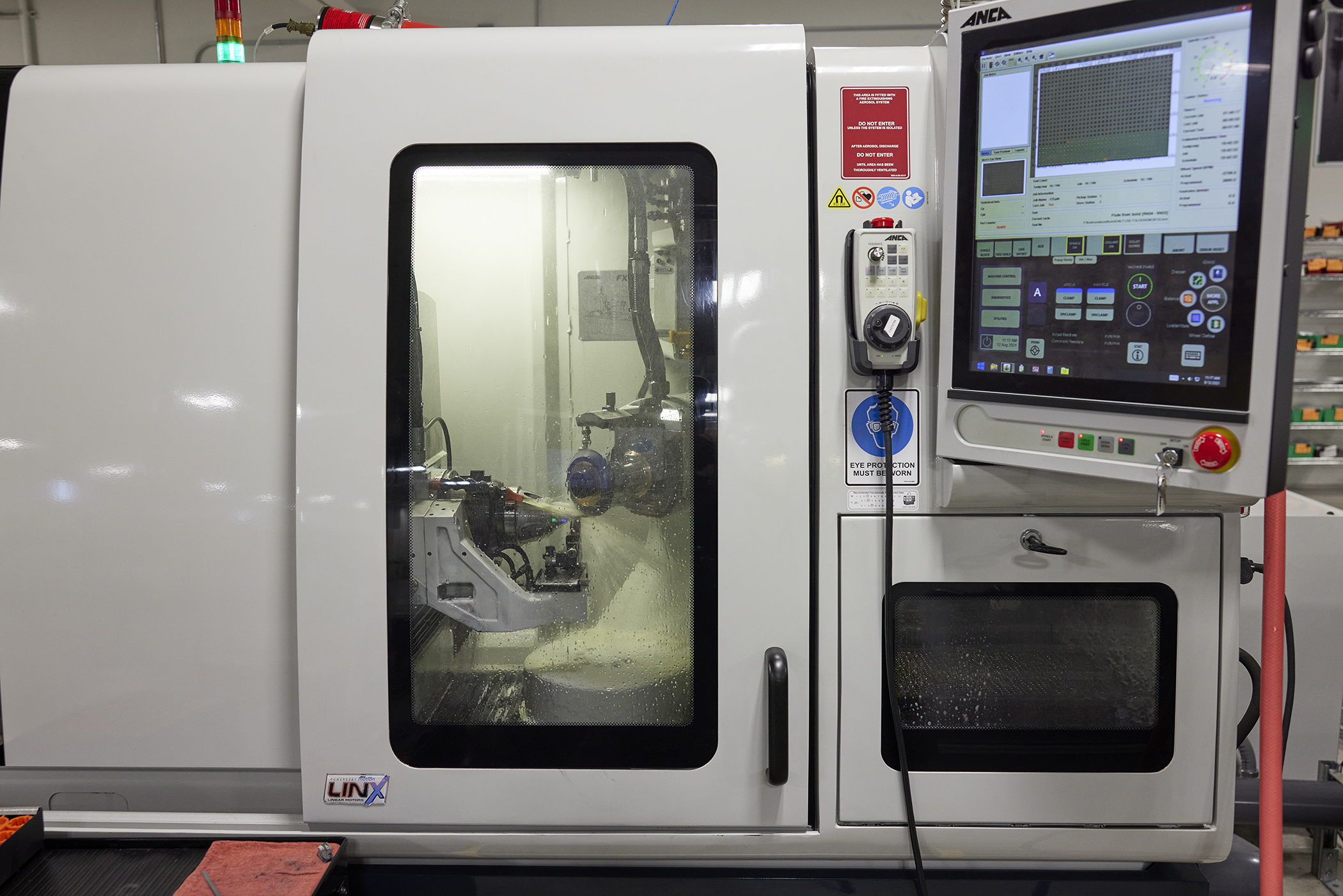 Levels of user friendliness and automation options available on ANCA machines have also grown up with Gorilla Mill.
Levels of user friendliness and automation options available on ANCA machines have also grown up with Gorilla Mill.
“Cross training” required among the fast-growing workforce is minimal, and most of the workshop’s machines have the same ANCA software,” said Cranker. “Plus, we have all of our machines tapped into a network.”
“We can just manipulate toolpaths and tool programs right in our simulator and then shoot that over to whatever machine they’re needed at.”
Every machine is equipped with a robotic loader -- either a pallet-style or a newer AR300 unit -- helping make lights out work possible. Daytime is for custom and short-run production. The third shift is unmanned.
As the company grows its staff and revenues, which has risen nearly 900 percent since the beginning of the Gorilla Mill era, Cranker estimated that it will continue to invest in FX and MX machines, as well as robotic options to go with these.
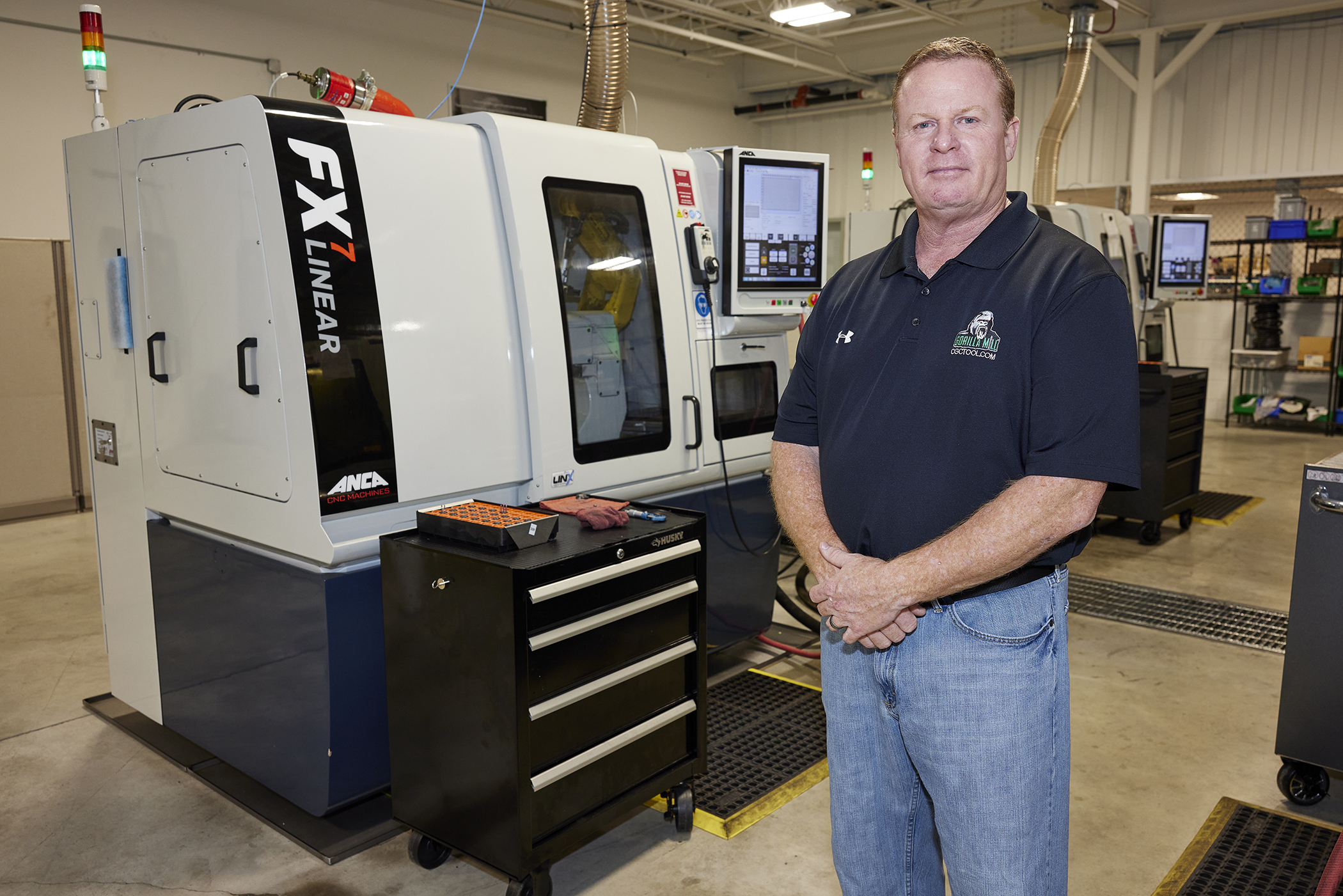 “We currently have the ability to make 3,500 endmills a night, if need be, and that's huge for us, said Cranker, who recalls the company getting started with automation on the old RGX machine.
“We currently have the ability to make 3,500 endmills a night, if need be, and that's huge for us, said Cranker, who recalls the company getting started with automation on the old RGX machine.
“It can be tricky if you don't know how to set things up right, and ANCA’s done a pretty good job of trying to keep complications to a minimum. But we honed our skills, and every time we moved up, we bought another loader, because I really want to be able to make tools lights out.”
For more information, visit https://machines.anca.com or phone 248-926-4466.
Related Glossary Terms
- chatter
chatter
Condition of vibration involving the machine, workpiece and cutting tool. Once this condition arises, it is often self-sustaining until the problem is corrected. Chatter can be identified when lines or grooves appear at regular intervals in the workpiece. These lines or grooves are caused by the teeth of the cutter as they vibrate in and out of the workpiece and their spacing depends on the frequency of vibration.
- computer numerical control ( CNC)
computer numerical control ( CNC)
Microprocessor-based controller dedicated to a machine tool that permits the creation or modification of parts. Programmed numerical control activates the machine’s servos and spindle drives and controls the various machining operations. See DNC, direct numerical control; NC, numerical control.
- grinding
grinding
Machining operation in which material is removed from the workpiece by a powered abrasive wheel, stone, belt, paste, sheet, compound, slurry, etc. Takes various forms: surface grinding (creates flat and/or squared surfaces); cylindrical grinding (for external cylindrical and tapered shapes, fillets, undercuts, etc.); centerless grinding; chamfering; thread and form grinding; tool and cutter grinding; offhand grinding; lapping and polishing (grinding with extremely fine grits to create ultrasmooth surfaces); honing; and disc grinding.
- grinding machine
grinding machine
Powers a grinding wheel or other abrasive tool for the purpose of removing metal and finishing workpieces to close tolerances. Provides smooth, square, parallel and accurate workpiece surfaces. When ultrasmooth surfaces and finishes on the order of microns are required, lapping and honing machines (precision grinders that run abrasives with extremely fine, uniform grits) are used. In its “finishing” role, the grinder is perhaps the most widely used machine tool. Various styles are available: bench and pedestal grinders for sharpening lathe bits and drills; surface grinders for producing square, parallel, smooth and accurate parts; cylindrical and centerless grinders; center-hole grinders; form grinders; facemill and endmill grinders; gear-cutting grinders; jig grinders; abrasive belt (backstand, swing-frame, belt-roll) grinders; tool and cutter grinders for sharpening and resharpening cutting tools; carbide grinders; hand-held die grinders; and abrasive cutoff saws.
- milling machine ( mill)
milling machine ( mill)
Runs endmills and arbor-mounted milling cutters. Features include a head with a spindle that drives the cutters; a column, knee and table that provide motion in the three Cartesian axes; and a base that supports the components and houses the cutting-fluid pump and reservoir. The work is mounted on the table and fed into the rotating cutter or endmill to accomplish the milling steps; vertical milling machines also feed endmills into the work by means of a spindle-mounted quill. Models range from small manual machines to big bed-type and duplex mills. All take one of three basic forms: vertical, horizontal or convertible horizontal/vertical. Vertical machines may be knee-type (the table is mounted on a knee that can be elevated) or bed-type (the table is securely supported and only moves horizontally). In general, horizontal machines are bigger and more powerful, while vertical machines are lighter but more versatile and easier to set up and operate.

 INDUSTRY NEWS
INDUSTRY NEWS



